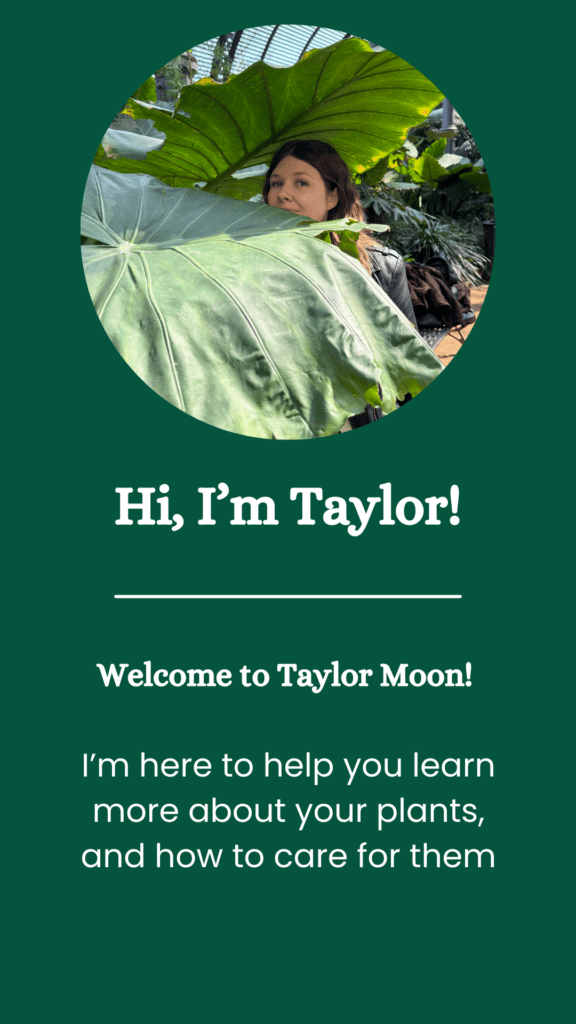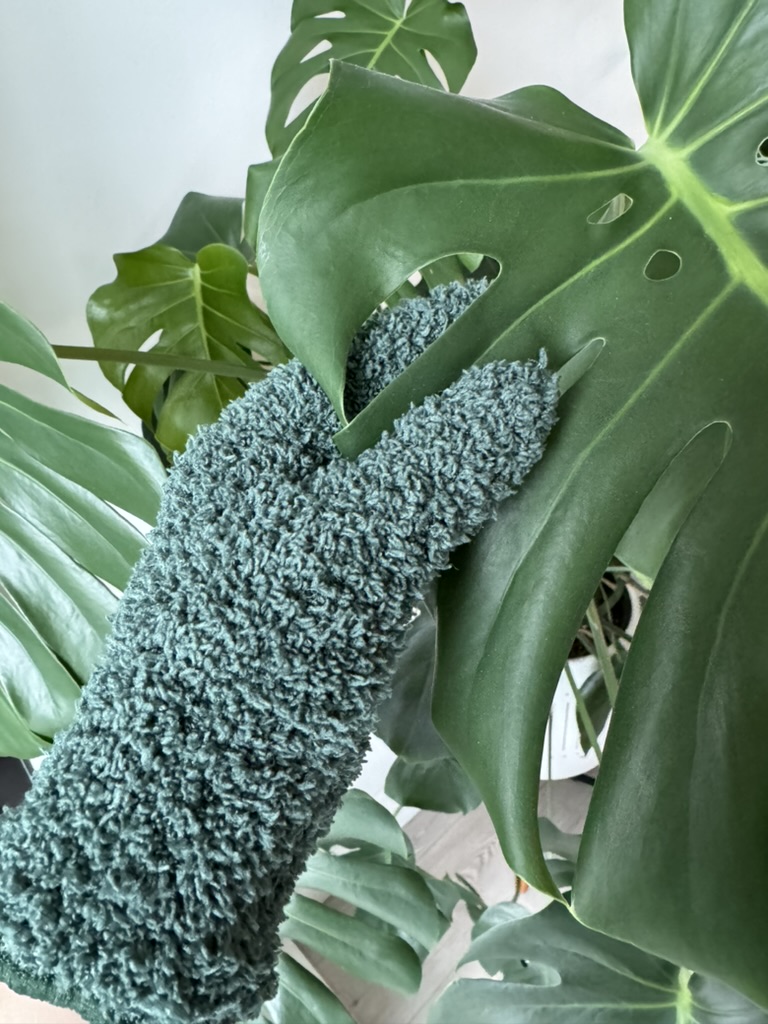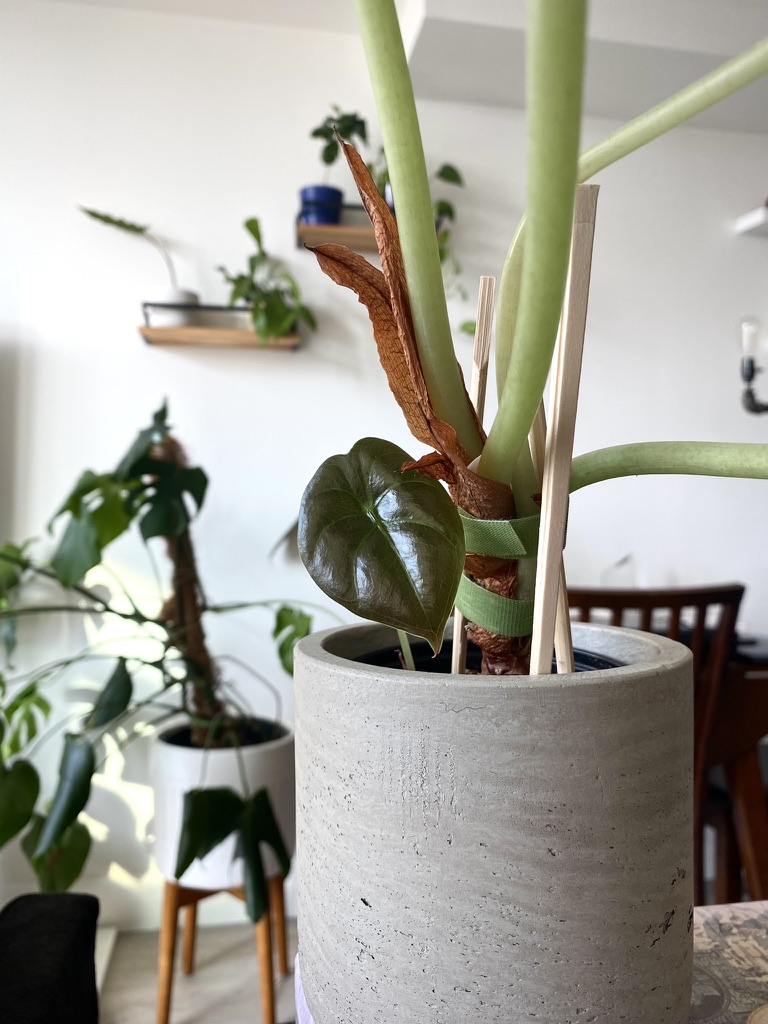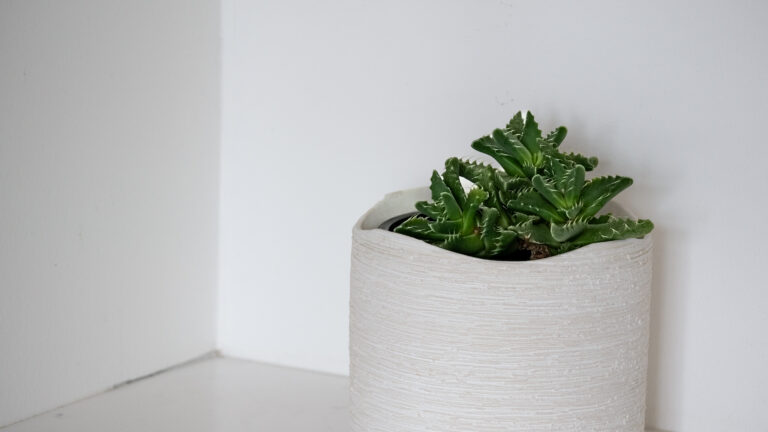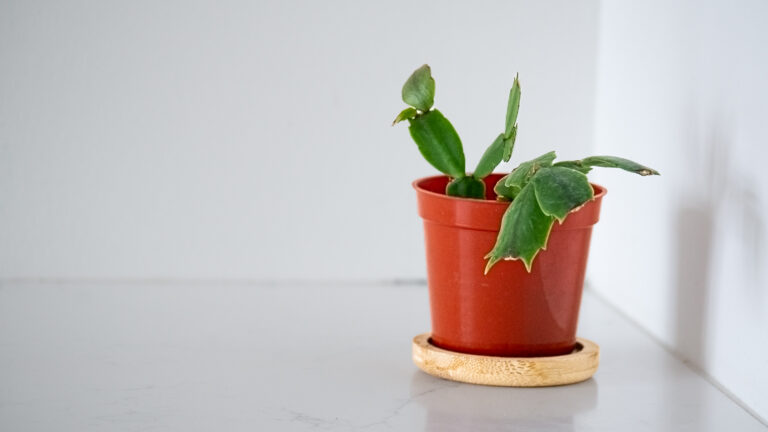Aloe Vera is a succulent, a member of the aloe genus, and the Asphodelaceae family.
The history of Aloe dates back thousands of years. It has been used for its medicinal purposes by many ancient civilizations including the Egyptians, Chinese, and Greeks. The ancient Egyptians referred to Aloe Vera as the plant of immortality, the Chinese referred to is as the elixir of youth.
This is likely because the inside of Aloe Vera has the gel like substance that is used in many skincare and medical products. It is common to use Aloe Vera gel to heal from sunburns as the gel has soothing and cooling properties.
There are more than 500 species of Aloe and it is native to Africa, Arabia, Jordan, some smaller islands win Indian Ocean.
🪴 Appearance of Aloe Vera
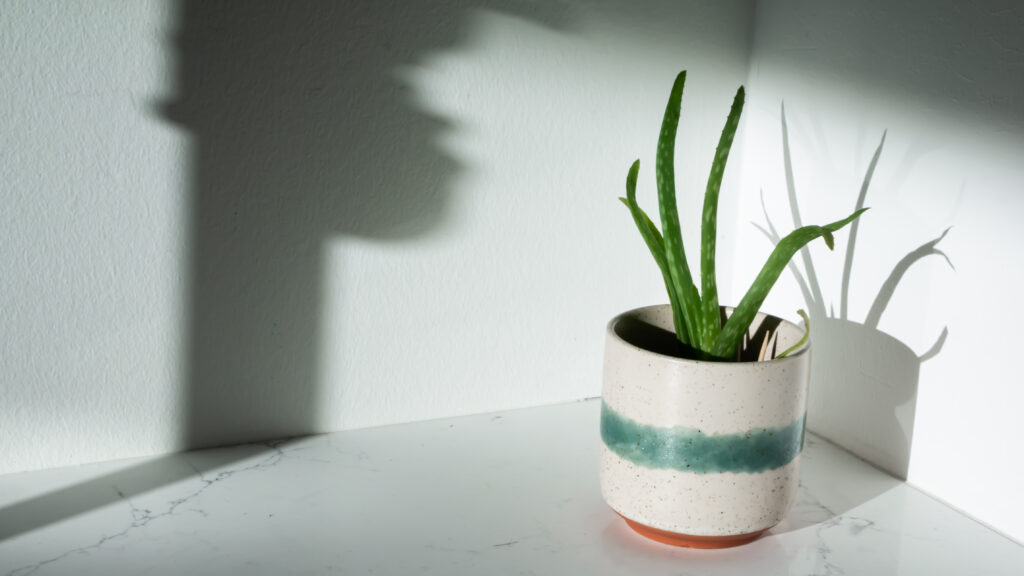
Aloe Vera has green, spiky leaves that form a rosette-like shape. Newer leaves are a brighter green (like you can see above), before fading to a slightly less saturated green. If the plant has too much sun, the leaves will turn red. See the “Pests & Problems” section below on how to fix this.
☀️ Light Needs
Aloe Vera thrives in bright, indirect light. They prefer south- or west-facing windows.
While Aloe Vera grows in sunny environments in the wild, it grows best when the light is blocked or filtered by larger items like rocks or big plants.
🌡️ Temperature & Humidity 🌫️
Aloe Vera like temperatures between 13-27 degrees celsius, and moderate humidity. Since they come from arid regions, they prefer drier air, but do well in average household humidity levels (40-60%).
I keep my Aloe closer to the window and further from the humidifier (I use the Levoit Hybrid Ultrasonic Humidifier (LV600HH)). I use my humidifier to ensure the humidity levels in my apartment stay between 40% and 60%. Since I live in Canada and the winters can be very dry, and the humidity can drop below 30% humidity, so its helpful to set the humidity at about 45% or 50% in this season to keep all of my plants helpful.
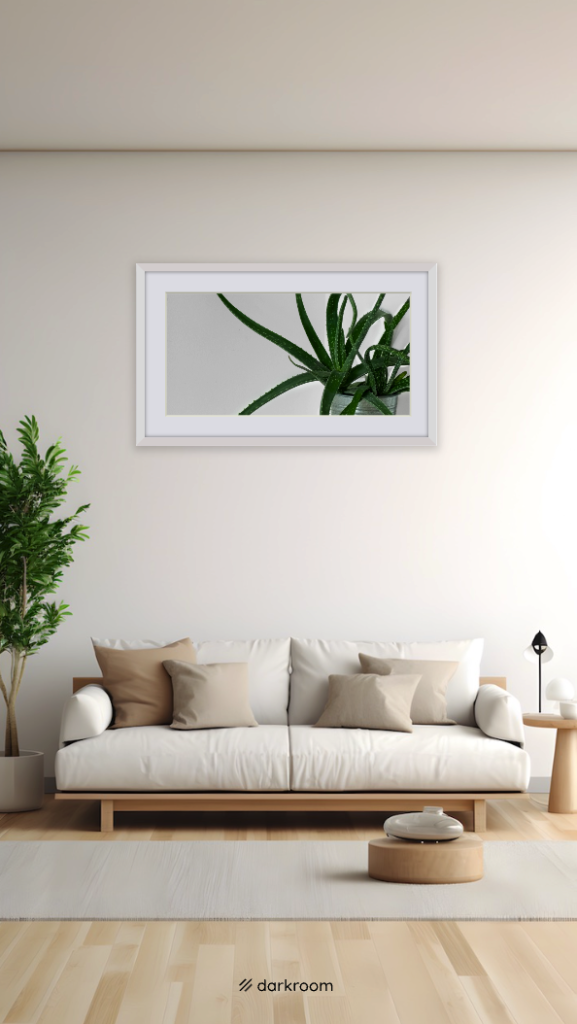
🌱 How Does Aloe Vera Grow?
On average, Aloe Vera grow as tall as 2ft indoors, sometimes even up to 3ft. In the wild, Aloe Vera can grow up to 3ft. New foliage grows from a central rosette.
It is very common for Aloe Vera to grow baby aloe offshoots, also known as pups.
🌸 Does Aloe Vera Bloom?
Aloe Vera can bloom indoors, but it is not common.
✂️ How to Propagate Aloe Vera?
The easiest way to start a new Aloe Vera plant is to separate the pups from the mother plant. More details on the offsets method and the other methods of propagation below.
- Offsets: Look around the base of the plant for pups. Make sure the pups are at least 2 to 3 inches tall before separating them from the mother plant. Gently remove them from the parent plant by separating them at the base. Set the pups aside for a couple of days until a callus forms. Once calloused, pot the pups into well-draining soil. Bury the cut end slightly. Water the soil lightly and place in a bright location with indirect light. Eventually, roots will form and you will have a stable plant!
- Division: Sometimes multiple plants will be potted together. In this situations, you can remove the entire plant from the pot, gently separate the plants, and plant the individual plants into new pots. Make sure you water the newly divided plants and place them in a bright location with indirect light.
- Cuttings: Choose a leaf from a healthy adult Aloe Vera plant. Make sure the cutting has at least one node or this method won’t work. Wait for the cutting to callus over in a well lit spot. This should take a couple of days. Once the callus is formed, you can pot it into a well-draining potting mix.
Patience is key with propagation. Give your new plant time to settle into its environment. Once you see new growth, you know your plant is well established.
💧 How Much Water Does Aloe Vera Need?
As Aloe Vera is a succulent, it likes to dry out between waterings. To determine if your plant needs water, you can stick your finger in the soil (1 to 2 inches) and if it is dry, its ready for water!
If you don’t want to get your hands dirty, you can try a moisture meter (I personally have not used one, but I know quite a few people who do, and this one is really highly rated on Amazon).
Aloe Vera typically need to be watered every 2 to 4 weeks, depending on your environment.
I typically bottom water this plant through the drainage hole of the pot on a tray. It’s the easiest way to know if your plant is thirsty or not. Overwatering can lead to fungus gnats, root rot, or the death of your plant.
You can top water, but it’s best to do so in a pot with drainage until water is flowing out of the hole. If your pot doesn’t have drainage, you might accidentally drown your plant or make some fungus gnats very happy.
You should top water from time to time to make sure any built up minerals can wash through the plant. The water should drip out of the bottom of your drainage hole.
🪳 Pests & Problems 😔
Aloe Vera are fairly pest tolerant, however they can face the following pests and problems.
🪳 Pests
- Spider Mites: If you see webbing or or signs of damage on my leaves, spider mites may have taken to your plant. I spray the plant with a mixture of neem oil, dish soap and water. I repeat this about once or twice a week (depending on the severity of infestation) for about a month. It’s also good to do this preventatively once a month or so. Learn how to eradicate Spider Mites.
- Mealy Bugs: these look like little white cotton balls on the plant. You can remove these with your fingers if you catch them early enough, but I would use a cotton swab with a drop of Isopropyl alcohol and try to scrape them off the stem.
- Fungus gnats: Spray the plant with a mixture of neem oil, dish soap and water. I also let the soil dry out and add dryer sheets on top of the soil so the gnats can’t sense the moisture on the soil.
- Scale: I’ve never personally had scale (knock on wood) and I am very thankful. Scale are small, brownish, round or oval insects that attach themselves to the leaves or stems of the plant. They are hard to notice as they appear like a growth or bump on the plant. Scale can cause yellowing, wilting, and weakened growth. Removing scale from a plant is tedious, like with mealybugs. You can remove scale by manually removing them with a cotton swab with rubbing alcohol, using insecticidal soap or horticultural oil.
- Aphids: Aphids are small, insects that cluster under leaves and stems. They can appear white, brown, black, gray, light green or yellow. If you see distortion, wilting or yellowing leaves, this can be a sign of aphids. You should be able to spray them off with a strong stream of water or using insecticidal soap.
😔 Other Common Problems
- Drooping Leaves: On Aloe Vera, drooping leaves can indicate overwatering, underwatering, poor environmental conditions (amount of light or temperature are incorrect), nutrient deficiencies, or root issues.
- Yellowing: If your Aloe is turning yellow, it can be a sign of overwatering, underwatering, lighting issues, nutrient deficiencies, pest infestation or environmental stress.
- Overwatering: Root rot happens from overwatering your plant with insufficient drainage. You can improve the drainage of your plant by ensuring your aloe is potted in a planter with a drainage hole and using a well draining soil (something with a decent amount of perlite). You can also end up with fungus gnats or fungal disease from overwatering your aloe.
- Underwatering: Even though Aloe like to completely dry out between waterings, you still have to remember to water it on a consistent schedule. Signs of underwatering an aloe include leaves becoming shrivelled, discoloured or dry.
- Sunburn: Even though you will often find Aloe in bright, sunny environments, they can be burned. Just like in humans, the leaves of the aloe will start to turn red, yellow, white, bleached or sometimes kind of purple. To fix sunburn in an aloe you can move it to a less sunny place.
☢️ Is Aloe Vera Toxic?
Aloe Vera this plant is typically safe to humans, but can be toxic to both pets and humans if ingested in large quantities. However, the yellow latex in the rind can cause skin irritation.
Aloe Vera Quick Care Guide
| Scientific Name | Aloe Vera |
| Nickname | N/A |
| Origins | Arabian Peninsula |
| Light | Bright, indirect, medium-light. South- or west-facing windows |
| Temperature | 13-27 degrees celsius |
| Humidity | Low |
| Height | Up to 2ft indoors |
| Blooms | Yes, but not common |
| Propagate | Offsets, Division, Cuttings |
| Water Frequency | When dry (likely once a month) |
| Pests | Spider Mites, Thrips, Mealy Bugs, Fungus Gnats, Scale, Aphids |
| Common Problems | Overwatering, Underwatering, Yellowing Leaves, No Leaves, drooping leaves, sunburn |
| Toxicity | Low (not safe when ingested) |
